If you’ve ever seen a storm glass and wondered how it works, you’re not alone. These fascinating little devices have been around for centuries, but their inner workings are still something of a mystery to many people. In this article, we will take a close look at storm glasses and explain how they work. We’ll also provide some tips on how to get the most out of your storm glass!
Table of Contents
What is a Storm Glass?
Inside, there are various combinations of chemicals, including potassium nitrate and camphor. As atmospheric pressure, temperature, and humidity change, these chemical crystals form patterns which can be interpreted to forecast the weather ahead.
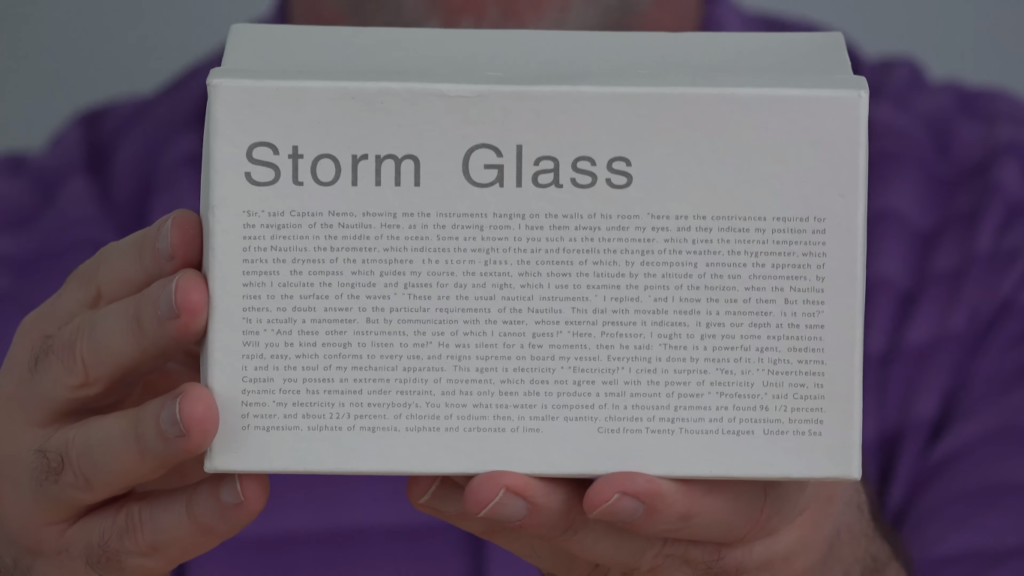
The most common type of storm glass consists of a sealed glass chamber containing water as well as several solid substances such as ammonium chloride and potassium nitrate. When exposed to fluctuating temperatures or changes in atmospheric pressure, the substances within the glass react differently causing them to form unique crystal structures which can then be interpreted by experienced meteorologists.
The modernized version of storm glass was popularized in the 19th century by Admiral Robert Fitzroy, who used them on his ship HMS Beagle while sailing around South America. Today they are still commonly used to predict upcoming weather patterns and can be found in many homes and offices as decorative items. [1], [2], [3], [4]
Types of Storm Glasses
Throughout the history of storm glasses, there have been various types that were used depending on the era.
Cape Cod storm glass
A Cape Cod Storm Glass is a unique weather forecasting tool consisting of a single uncovered glass bottle filled with a colored water. The solution inside the storm glass is designed to respond to changes in barometric pressure.
This is considered to be one of the oldest types of forecasting tools available. It is believed to have originated during the 17th century and was attributed to Johann Wolfgang von Goethe, a German scientist and philosopher.
Fitzroy storm glass
The next type of storm glass was a “Fitzroy” which we just mentioned. There’s no clear evidence on who exactly invented this type of storm glass but it is believed that Admiral Robert Fitzroy was the first one to popularize it. [1], [2], [3], [4]
How Does a Storm Glass Work?
So now that we know what a storm glass is, you may be wondering how it works? Well, the answer lies in the chemical reaction that takes place inside the glass.
When exposed to changes in atmospheric pressure or temperature, the chemicals inside the storm glass will change in various ways. These different formations can then be interpreted as signs of upcoming weather patterns.
However, how exactly the storm glass works varies by its type. Let’s dig deeper into that!
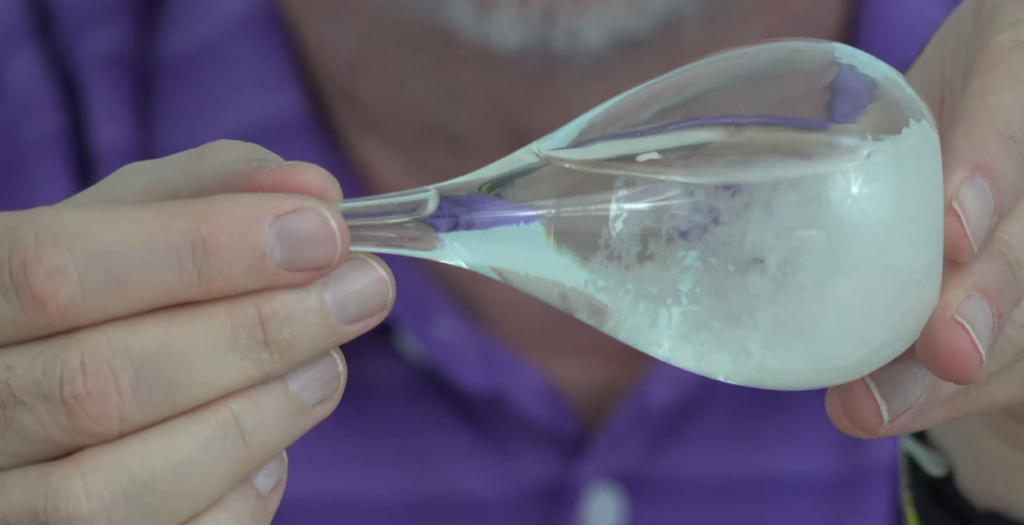
How does a Fitzer storm glass work?
A Fitzroy storm glass consists of a sealed glass bottle filled with distilled water, camphor oil and potassium nitrate (or other chemicals). The liquid inside the glass changes based on atmospheric pressure, humidity and temperature. By reading these indications users can make an educated guess about upcoming weather conditions.
There isn’t much evidence on how exactly barometric pressure and other atmospheric conditions affect the storm glass. However, a few studies have been made that suggest the liquid inside is affected by changes in temperature, barometric pressure and humidity.
The changes can vary from the formation of crystals on the surface, a cloudy liquid or clear water with crystals at the bottom. Each type of crystal formation suggests a different kind of weather pattern and atmospheric changes.
For example, clear liquid indicates that the weather will be clear and calm. Cloudy liquid is a sign of upcoming rain and the cloudy liquid with the formation of stars on the surface suggests thunderstorms.
If the crystals are collected at the bottom then this means that the frosts are coming and if you see the little threads on the top only then the weather will be windy.
How accurate is the Fitzer storm glass?
However, there’s another question that bugs a lot of folks. How accurate is the Fitzer storm glass?
Well, there’s no simple answer to this question. The accuracy of a Fitzer storm glass heavily depends on who’s interpreting its readings and how it’s used. You could be an experienced meteorologist or an average Joe – either way you need to learn how to interpret the crystal formations correctly in order to get accurate predictions.
That being said, many experts believe that the storm glass should be used as a supplemental forecasting tool rather than relying on it for precise readings. The accuracy of the Fitzer storm glass is 50% at best and usually falls in the range of 20% to 30%.
However, it’s important to keep in mind that storm glasses are usually very sensitive and may be affected by other factors like direct sunlight or changes in temperature indoors. Therefore, users should always read their storm glass readings with caution. Additionally, many barometers are more reliable forecasting tools than a storm glass.
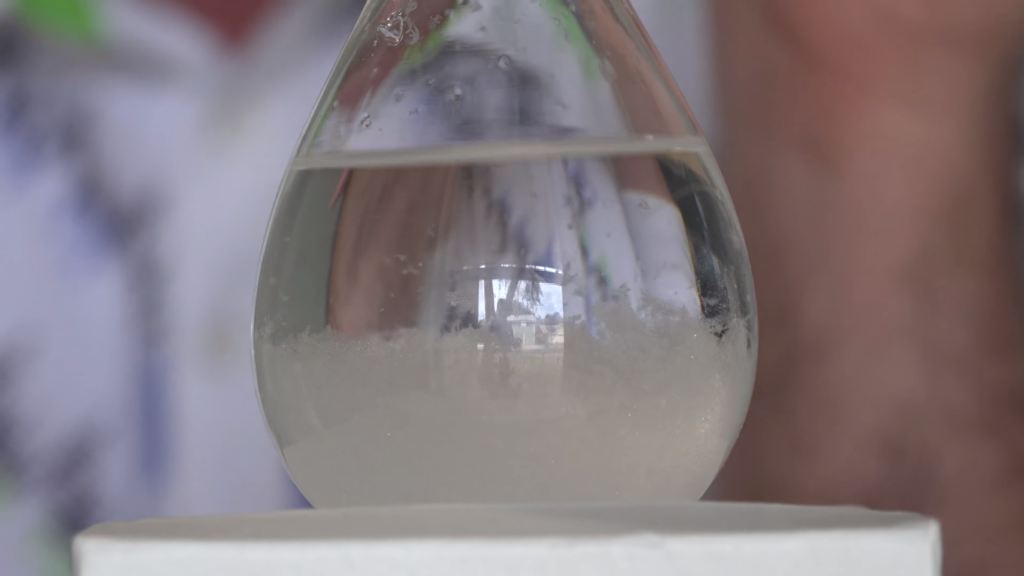
How does a Cape Cod storm glass work?
As we already mentioned the Cape Cod storm glass is considered to be one of the oldest types and works differently from a Fitzroy storm glass. It consists of a single uncovered glass bottle containing colored water.
Unlike the Fitzer’s storm glass that responds to changes in barometric pressure by crystallization and precipitation, the Cape Cod storm glass works by changing the liquid’s level. As the barometric pressure increases or decreases, so does the liquid in the bottle. If the liquid is low it indicates fair weather and if its high, it suggests stormy weather on the horizon.
But how does it do it? Well, there’s in fact an air bubble inside the bottle trapped inside that changes in size depending on the barometric pressure.
If the pressure is lower than it was when the bubble was trapped, the atmospheric pressure is weaker and the bubble will expand, pushing more liquid into the bottle and raising its level. On the other hand, if barometric pressure increases, the air bubble gets compressed and some of it is forced back inside, lowering the liquid level in the bottle.
By observing these changes over time you can get an idea of what kind of weather should be expected in your area. Of course this isn’t a precise or reliable way to forecast weather but it’s fun tinkering with something that seems like magic.
The higher the pressure is, the clearer the weather is supposed to be, and the lower the pressure, the more turbulent weather you should expect.
How accurate is the Cape Cod storm glass?
Still, the Cape Cod storm glass needs to be used with caution since its accuracy is still debatable. It’s true that the level of liquid inside can change somewhat in response to barometric pressure changes, but it doesn’t necessarily mean that this will always indicate an upcoming storm or sunny day.
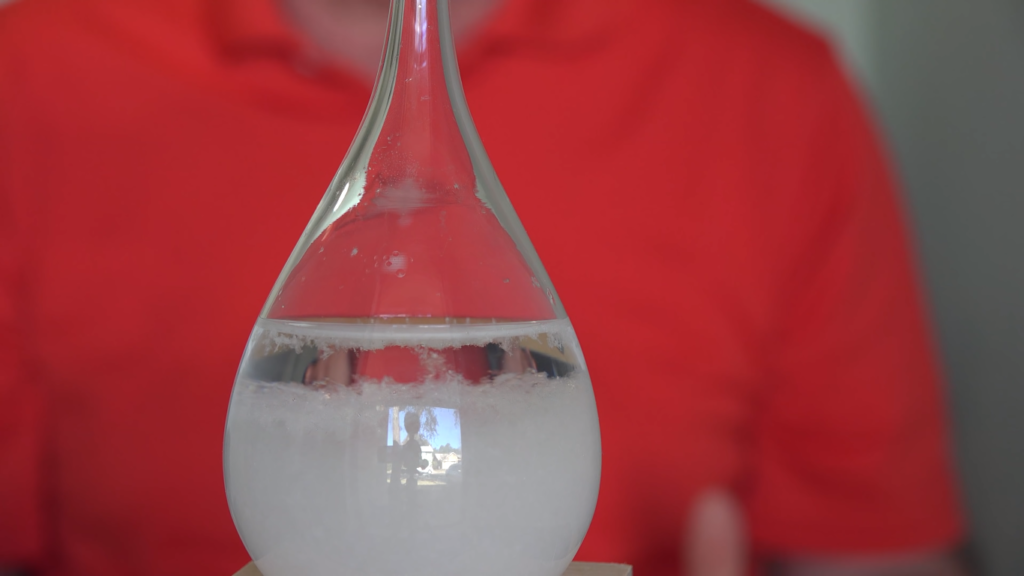
For example, high levels of humidity and temperature can also cause changes in the liquid level, even if there are no fluctuations in the atmospheric pressure. Therefore, due to these factors as well as some other unknown ones, it’s impossible to rely entirely on this instrument for accurate weather forecasts.
Because of all this, you should use it as an interesting weather-related experiment and check out other more reliable sources (such as the TV, radio, or online) for better predictions.
That being said, it would be a mistake to disregard this instrument altogether. While it’s true that its accuracy is far from perfect, observing the changes in your storm glass over time can still give you an idea of what kind of weather you should expect in your area. The Cape Cod storm glass is a simple type of barometer that anyone can use to observe how barometric pressure affects both liquid level and crystal formations. It’s an interesting way to study how changes in the atmosphere affect our environment. With a better understanding of the storm glass and its workings you can become your very own amateur meteorologist! [1], [2], [3], [4]
Where Should You Place the Storm Glass
Knowing how the storm glass works is one thing, but where should you place it in order to get the most accurate readings?
Ideally, you should place your storm glass in a safe, dry spot that’s not exposed to direct sunlight or any other source of heat. That will keep it from having its readings skewed due to temperature fluctuations. It’s also important to make sure the bottle is kept upright and level, as an unbalanced storm glass could lead to unreliable results due to the liquid constantly sliding down one side of the bottle.
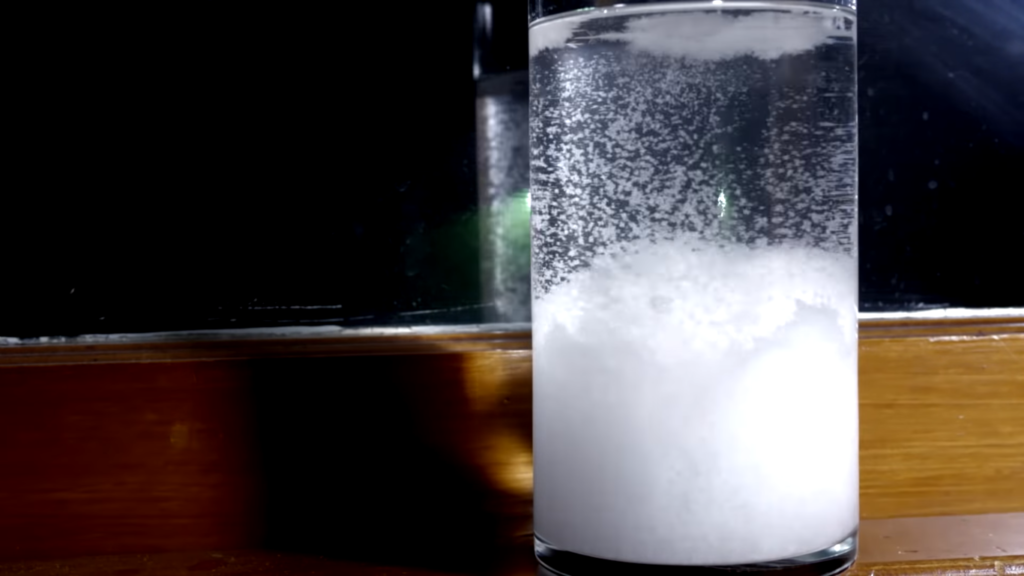
Placing your glass near a stand or a table is also a great way to guarantee it won’t be accidentally knocked over or moved. That’s especially important if you plan on bringing your glass outside for camping trips and the like, as any sudden movement of the storm glass could cause crystal formations to form in an unpredictable manner. [2], [4]
Fun Activities With a Storm Glass
However, you shouldn’t dismiss the storm glasses as a mere weather forecasting instrument. It can also be used for some fun activities that can make learning about atmospheric pressure even more interesting and engaging.
Test the accuracy of your storm glass
You can test the accuracy of your storm glass by checking what kind of changes it forecasts. This can be done within a week or over several months, depending on how detailed you want to get with the data. Make sure that you take note of other factors like temperature and humidity as well as pressure when testing the accuracy of your storm glass.
The easiest way to do so is compare the results of your storm glass to the weather forecasts in your area. See how much of the forecast is accurate and whether or not it matches up with what you’re seeing in your storm glass.
If you have a weather station installed in your home, take note of its readings and compare them to what the storm glass is forecasting. This can be an especially useful way to check how well the storm glass works in predicting pressure changes if you’re living in a place where quick fluctuations in atmospheric pressure are common.
Utilize it to predict the weather
By closely observing the crystals’ formations inside your storm glass, you can easily predict upcoming weather conditions. As a rule of thumb, if there’s no visible change in the formation of the crystals, then it’s an indication that the current atmospheric pressure would remain constant for some time. On top of that, if the crystals move towards the bottom, it could mean that a storm is coming and vice versa – when they slowly travel to the top of the glass bottle, then it might be fair skies ahead.
It’s incredibly interesting to watch the changes happen and observe how the crystals move inside your storm glass. You can even involve your children in predicting the weather by taking turns to watch out for any changes inside the bottle.
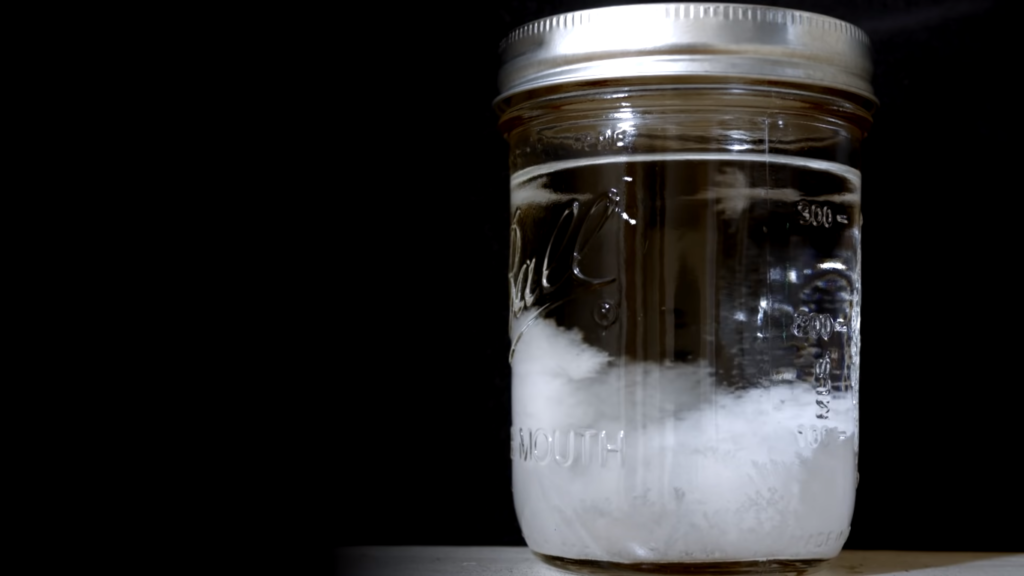
Create your own Storm Glass
Another fun activity that you can do with a storm glass is create your own unique version. There are many kits available online that allow you to customize the design of your storm glass. You can choose different colors for the outer casing, as well as experiment with different liquid solutions inside.
Creating your own personalized version of a storm glass also means that you don’t have to stick with the traditional designs. If you’re feeling creative, you can even come up with some interesting shapes that are more suitable for home decor. [1]
FAQ
Should a storm glass be completely clear?
A storm glass is only clear when the weather is calm. Inside the storm glass is a liquid containing suspended particles of potassium nitrate, camphor, ammonium chloride and ethanol. As pressure and temperature change due to outside weather conditions, these suspended particles interact with each other forming different patterns in the liquid which can be interpreted as signals of upcoming weather changes.
When the atmosphere is stable, the particles settle at the bottom of the storm glass and the liquid becomes clear. The clearer your storm glass is, the more reliable it will be in predicting future weather patterns.
Where do you place a storm glass?
For the best results, a storm glass should be placed in an area with no direct sunlight, such as near a window or on a north-facing wall. It is important to choose a location that is not too hot or cold and has no drafts. Additionally, you want to make sure the storm glass does not come into contact with water or other liquids. Once you have selected the ideal spot for your storm glass, it’s time to hang it up!
For hanging the storm glass, there are various methods you can use depending on your preference. Some people opt for using suction cups specifically designed for artwork, while others prefer using nails or adhesive strips. For those who value portability and convenience, hanging chains and hooks are an ideal option as they allow you to move the storm glass to different locations with ease.
Whether you opt for suction cups, nails, adhesive strips, or any other method of hanging your storm glass, make sure it is secured firmly and not likely to fall down. Doing so will ensure that your storm glass remains safely in place and produces reliable forecasts with no false readings!
How does a glass weather Predictor work?
A storm glass weather predictor, sometimes known as a chemical weather glass, is a type of device that is used to predict the weather using changes in temperature and pressure. The basic design of a storm glass consists of a sealed glass container partially filled with liquid, usually containing some combination of alcohols and other liquids such as camphor or potassium nitrate.
The device works by observing how crystals form within the liquid when exposed to changing temperatures and pressures. Different crystal formations indicate different types of weather conditions, allowing users to accurately forecast up to 12 hours in advance.
However this device isn’t as accurate as modern weather prediction systems, so it should not be used as a replacement for traditional meteorological methods. It is best to use the storm glass in combination with other weather forecasting tools, like checking the local news or looking at a barometer.
How does a storm glass barometer work?
A storm glass barometer, also known as a Campbell-Stokes recorder or a Weatherglass, is an instrument used to predict changes in the weather. It is made of a sealed glass chamber filled with liquid containing two solids: camphor and ammonium chloride. As air pressure rises and falls due to changing weather conditions, these two substances react differently causing certain crystals to form inside the chamber.
The crystals that form give different indications of what kind of weather is coming, depending on their type and position inside the storm glass. We provided you with some examples below, to help you understand what kind of forecast it can provide.
Is the liquid in a storm glass toxic?
The liquid in a storm glass is not toxic, although some of the components used to make it can be hazardous if mishandled. The main component of most storm glasses is a mixture of distilled water and ethanol alcohol. In addition, there may also be other ingredients such as potassium nitrate, camphor, ammonium chloride, and others. When these ingredients are mixed together they form an amber colored liquid that rises and falls within the storm glass depending on changes in pressure or temperature.
When using a storm glass for forecasting weather, the liquid will naturally rise and fall in response to changes in pressure or temperature. As such, it’s important to not touch the inside of the glass or disturb its contents as this could lead to inaccurate readings. To use a storm glass effectively and safely, all you need to do is observe how the liquid within it behaves over time. By doing so, you can get an idea of what kind of weather is expected soon.
Useful Video: Storm Glass Review- Can They Really Predict the Weather?
Conclusion
Storm glasses are one of the oldest and most reliable ways to predict weather and can provide valuable insight into the coming conditions. Though they are not as accurate as modern technology, they are still able to give a general indication of what the weather is going to be like in the near future. While storm glasses may not be perfect, their simplicity and beauty make them a worthwhile addition to any home or office.
In this article we’ve discussed the history of storm glasses, how they work, and some tips on placing one. Using a storm glass is easy and does not require complicated instructions; simply place it in a location that receives natural light, fill it with distilled water, keep it away from direct sources of heat or cold (such as radiators), and observe the changes within the liquid. By taking all these precautions into account, you will be able to more accurately interpret your storm glass readings for an accurate forecast.
Finally, it is important to note that storm glasses are not infallible and may produce inaccurate readings due to various outside factors. However, if you take the time to properly care for your storm glass, you can be sure that it will provide excellent predictions of the weather in your area. Now that you know how a storm glass works, why not try one out next time there’s a chance of rain or snow? Enjoy!
References
- https://www.acurite.com/blog/what-is-a-storm-glass-and-can-it-accurately-predict-the-weather.html
- https://www.weathermakerz.com/storm-glass-guide/
- https://www.connectsavannah.com/savannah/how-do-storm-glasses-work-do-they-work-at-all/
- https://www.weatherstationadvisor.com/what-is-a-storm-glass/

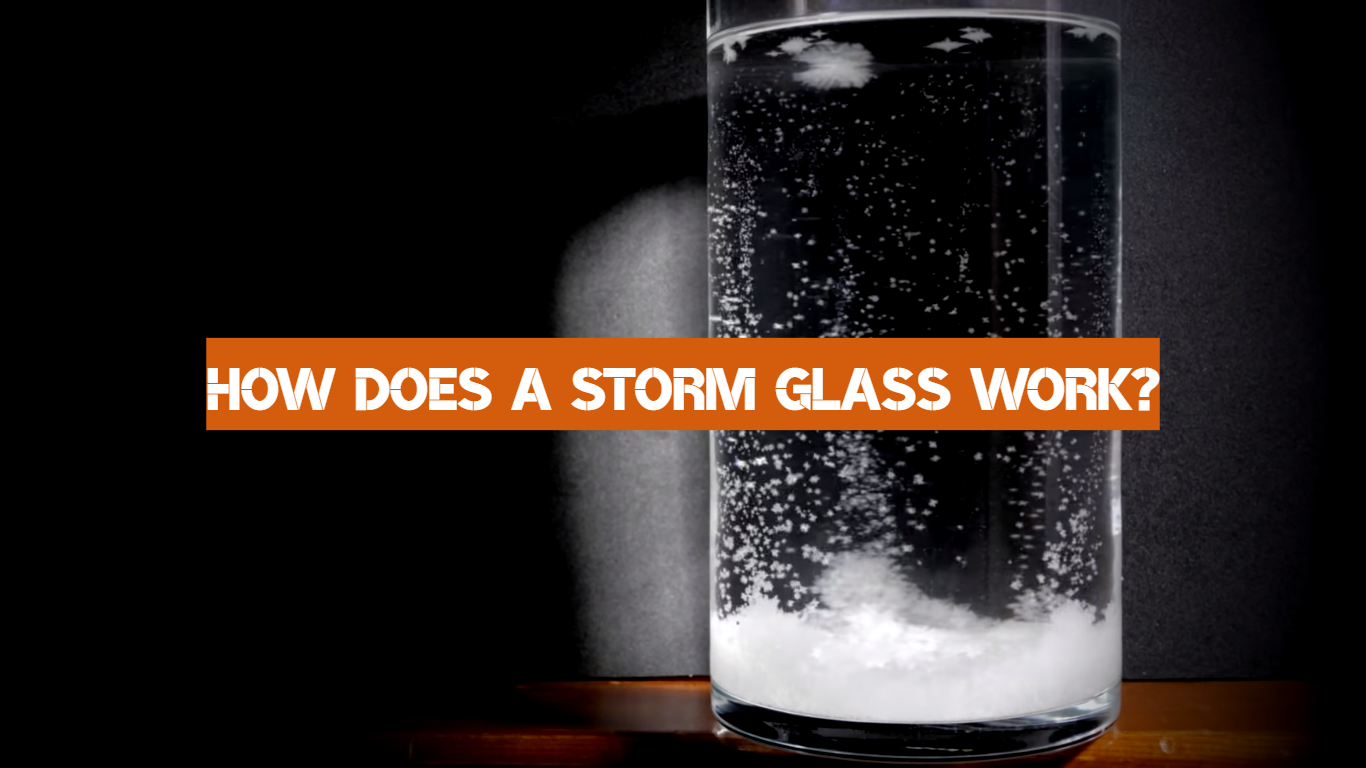
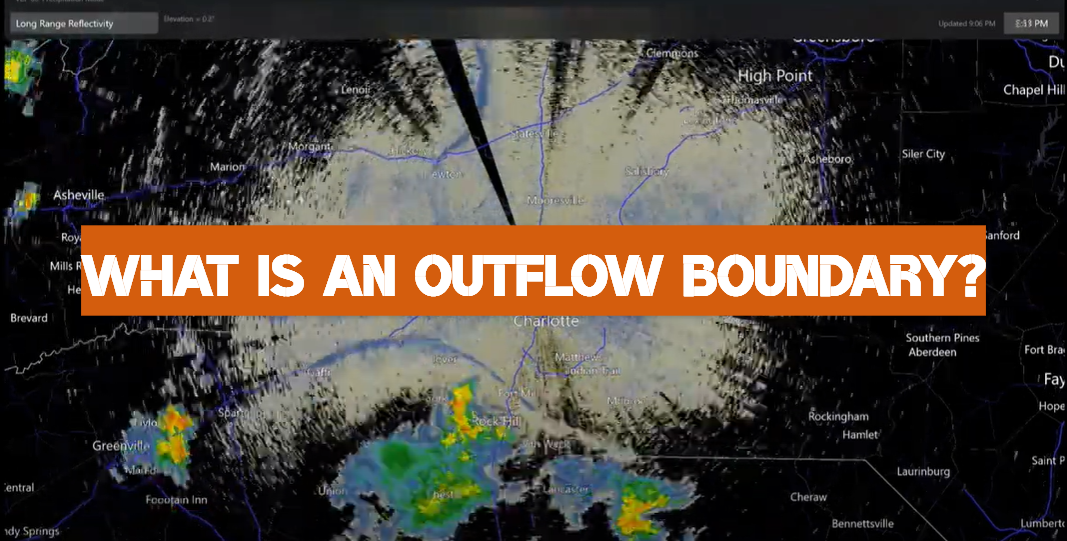

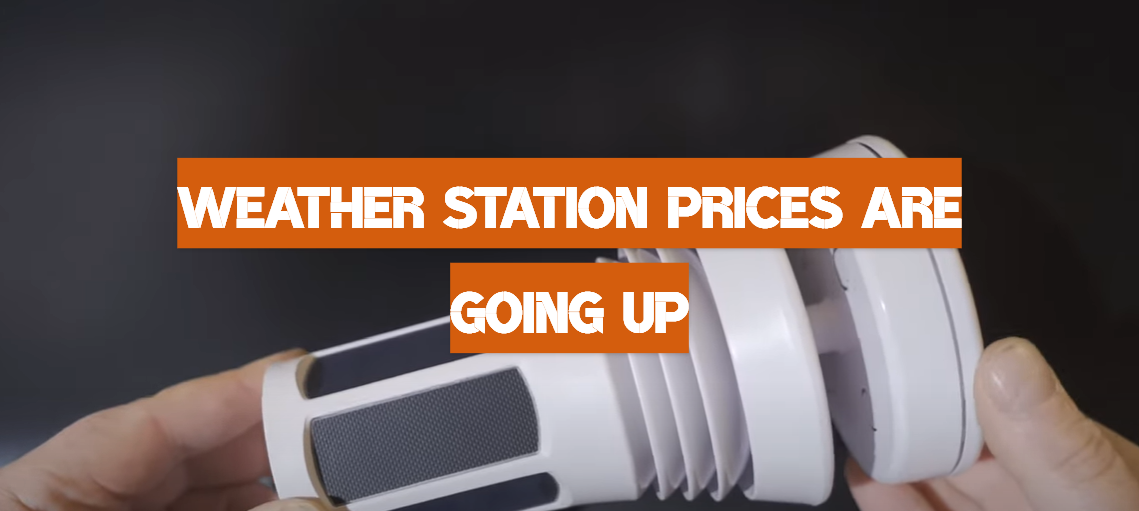

Leave a Reply